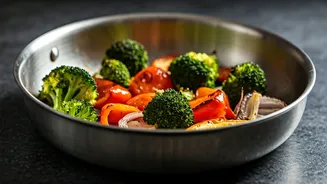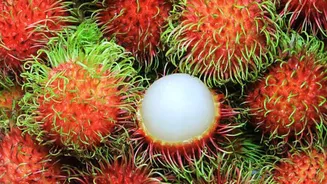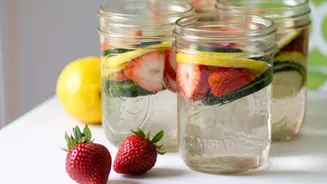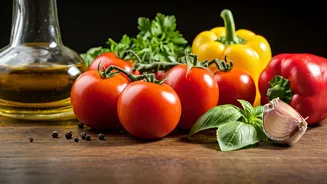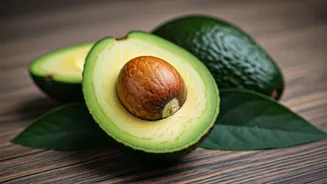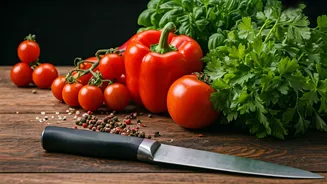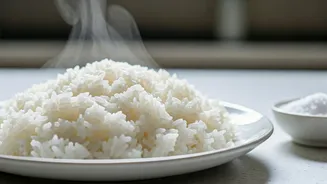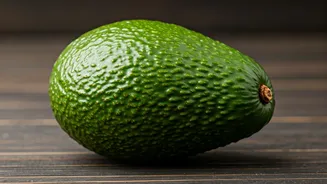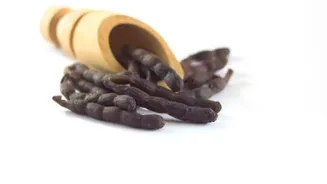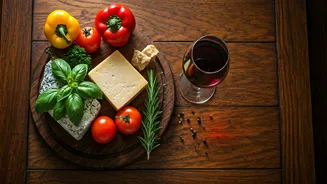The Pan's Significance
The often-overlooked hero of crispy vegetables isn't the oven itself, but rather the humble pan you select. This realization stems from a simple observation:
not all roasting pans are created equal. Some lead to vegetables that are charred and unappetizing, while others produce a delightful crispness and golden-brown hue. This isn't merely about personal preference; the pan itself directly impacts how heat is distributed and how moisture interacts with the food. The material, construction, and even the finish of the pan all play a role in influencing the final outcome. The right pan promotes even cooking, allowing vegetables to caramelize beautifully, unlocking a symphony of flavors and textures, transforming the mundane into the extraordinary.
Understanding Heat Dynamics
The key to understanding why certain pans excel lies in comprehending heat dynamics. The material from which a pan is constructed dictates how efficiently it conducts and retains heat. Pans that heat quickly and distribute heat evenly tend to yield better results. Consider, for example, a pan made from a material like stainless steel, which heats up relatively quickly but may not retain heat as consistently. In contrast, a pan made from cast iron, known for its exceptional heat retention, can potentially lead to uneven cooking if not carefully monitored. The goal is to choose a pan that can maintain a consistent temperature, allowing the vegetables to roast uniformly, and preventing localized hot spots that lead to burning. Furthermore, the pan's surface impacts how the vegetables interact with the heat. A dark-colored pan will absorb more radiant heat compared to a light-colored pan, further influencing the browning process.
Pan Material Matters
The choice of pan material is crucial to achieve the desired texture and flavor in roasted vegetables. Different materials exhibit different thermal properties, impacting how heat is conducted, retained, and distributed. For example, stainless steel pans are popular for their durability and ease of cleaning, but they don't always offer the best performance in terms of even heat distribution. They may develop hot spots, leading to uneven browning and potential burning. Cast iron pans, known for their exceptional heat retention, offer excellent browning potential. However, they can take longer to heat up and may require careful monitoring to prevent burning. Non-stick pans are convenient for preventing food from sticking. These pans often utilize a coating that minimizes the need for excessive oil, but they may not withstand high temperatures necessary for achieving the ideal crispiness. The ideal pan material depends on the vegetables being roasted, cooking preferences, and the desired outcome.
Surface Affects Crisping
Beyond the material, the pan's surface characteristics play a significant role in achieving crispy vegetables. A smooth surface may allow for easier release of food, reducing the chances of vegetables sticking and burning. Additionally, the color of the pan influences the roasting process. Darker pans absorb more radiant heat, contributing to quicker browning and potentially faster cooking times. On the other hand, lighter-colored pans reflect more heat, resulting in a more gentle cooking process. This is especially relevant when preparing vegetables that tend to caramelize quickly. The surface treatment, such as the application of a non-stick coating, also influences how food interacts with the pan. Non-stick coatings can prevent vegetables from sticking. However, they may not always be ideal for achieving maximum crispiness due to their limitations in withstanding high temperatures. The ideal pan surface offers a balance between even heat distribution, easy food release, and the ability to withstand the high temperatures required for perfect roasting.
The Recipe Element
The pan's significance extends beyond the cooking itself; it's a vital part of the recipe itself. The choice of pan directly impacts the flavors, textures, and appearance of the final dish. When roasting vegetables, consider the pan as a crucial tool in achieving the desired outcome. For example, a heavy-bottomed, dark-colored pan is often preferred for vegetables that benefit from intense caramelization and high-heat cooking. The pan's properties can significantly alter the cooking time, the amount of oil needed, and the overall cooking method. The goal is to select a pan that complements the other ingredients and techniques used in the recipe. The recipe may even need adjustments depending on the chosen pan, underscoring the interconnectedness between the pan and the final culinary result.
